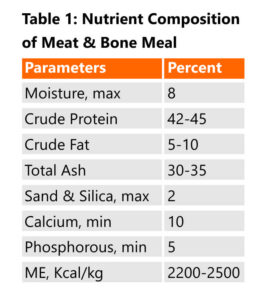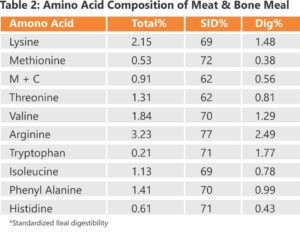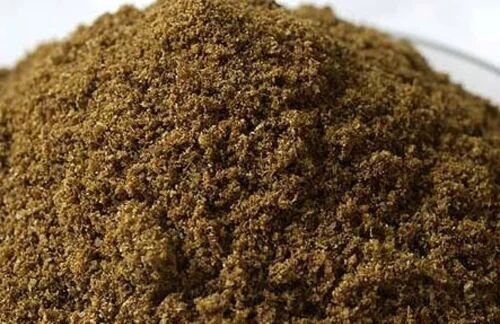

Poultry meat constitutes a significant portion, accounting for 51.14% of the overall meat production and consumption. With the escalating global population, the demand for poultry meat is expected to witness a commensurate rise. Its prevalence in the meat industry stems not only from its affordability but also from its judicious resource utilization compared to other meat sources. The poultry sector stands out as one of the industries experiencing a Compound Annual Growth Rate (CAGR) of 8%, and demonstrating a commitment to sustainability across its operational spectrum. Nonetheless, a noteworthy aspect is that ~80% of the production costs are attributed to feed, with two primary ingredients, Maize and Soybean Meal (SBM), collectively constituting approximately 90% of the feed composition.
The meat industry is under significant scrutiny, criticized not only for concerns about animal welfare and the environmental impact of waste and methane production but predominantly for its annual conversion of thousands of hectares of forests to cultivate soybeans to meet the ever-growing demand in animal feed industry (NASA McAlpine et al. 2009 Report – Global Environmental Change). The overreliance on a singular ingredient for animal feed not only depletes forest reserves but also disrupts entire ecosystems, causing irreversible damage to the forest-vital respiratory system of our planet.
In the realm of poultry production, the industry is significantly influenced by the demand and supply dynamics of Maize and Soybean Meal (SBM). As articulated by Mr. Naveen Pasupathy, President of KPFBA, “We are more into Grain business than Poultry Business”.
Addressing this dependency becomes imperative for economic, environmental, and sustainability reasons. This can be achieved through two key strategies: exploring alternative ingredients with comparable profiles and enhancing the efficiency and inclusion levels of existing alternatives, one such promising ingredient is Meat cum Bone Meal (MBM). While MBM holds the potential to improve production, reduce feed costs, and contribute to a circular economy by utilizing meat industry by-products, optimizing its usage is a continuous, strategic process. As mentioned by Mr. Balram Singh Yadhav Godrej MD “The future in poultry is for those who work in efficiency”.
This article delves into the current advantages and limitations of MBM, exploring why nutritionists, feed manufacturers, and farmers exhibit reluctance to increase its inclusion levels. Additionally, it identifies areas for future studies and innovations aimed at effectively utilizing MBM to alleviate financial burdens on farmers, and resource burden on the planet and facilitate a circular economy.
Why is MBM Used?
MBM as Protein Source
MBM stands out as a potent protein source with a protein content ranging from 42-45% CP (Crude Protein) in some sources even to 55% and a substantial Metabolizable Energy (ME) of 2200-2400 Kcal/kg. This nutritional profile positions MBM as a viable alternative to Soybean Meal (SBM) at an inclusion rate of up to 5% in poultry feed formulations. The amino acid composition closely mirrors the ideal amino acid profile, ensuring optimal protein utilization (R. Angel, 2013).
MBM as Macro Minerals (Ca and P)
Rich in Calcium and Phosphorus, MBM provides an efficient source of these essential macro minerals. By incorporating MBM at a 3% inclusion level, the need for inorganic phosphorus sources like Dicalcium Phosphate (DCP) and Monocalcium Phosphate (MCP) can be reduced by 1% and 0.75%, respectively. This could also be used to replace 50% and above inorganic phosphorus sources in feed. To replace DCP or MCP 50% and above, careful attention should be given to the Phytase (minimum of 1000 FTU/kg feed) quality and its uniform distribution via proper mixing. (D. M. Kornegay, 2010).
MBM for Formulating Least Cost Ration
The strategic incorporation of MBM as a substitute for SBM in feed formulations leads to a notable reduction in production costs without compromising performance. In one of the articles from Dr. S.S. Pattabhirama, Nanda Group in Think Grain Think Feed has emphasized and elaborated how MBM saves approximately INR 0.35 per kg feed, please refer to table 1 & table 2 for detailed calculations.


As the poultry sector continues its robust growth, effectively utilizing a substantial portion of meat industry by-products, such as MBM, promises dual benefits for both the poultry and meat industries and for the environment. This approach aligns with the principles of a circular economy, minimizing waste and maximizing resource efficiency (M. S. Fan, et al., 2007).
Why is MBM Used Only in Limited Quantities?
Inconsistent Quality
The nutrient quality of MBM is subject to significant variability, primarily attributable to two factors. Firstly, inconsistencies in the composition of offals used during MBM preparation. Secondly, the temperature, time, and pressure conditions employed in the MBM preparation process play a pivotal role in determining its final composition (M. F. Fuller, 2004).
Microbial Contamination
Due to its rich nutrient composition and handling of offals as waste material, Microbial contamination in MBM poses significant risks to both poultry and human health. Salmonella, E. coli, and Clostridium are bacteria of particular concern due to their potential impact on performance and health in birds and the risk of transmission to humans. (Jones et al., 2012) (Cooper and Songer, 2010). However, the total bacterial count should be less than 10*103 CFU per gram is acceptable. The presence of these bacteria in MBM is one of the major limiting factors for increasing inclusion levels.
Limited Shelf life
The rich fat content in MBM renders it prone to oxidative damage, posing a serious threat

Demand and Supply
The inherent challenge of MBM production lies in its comparatively lower availability compared to Soybean Meal (SBM). As poultry feeds increasingly incorporate MBM, the demand rises and so does the rate, potentially impacting the cost-effectiveness of its usage. This dynamic is reminiscent of the challenges faced by any feed ingredient experiencing a surge in demand, necessitating a delicate balance in the market.
Necessity is the mother of Invention – Promising Future Study Areas
It is important to acknowledge that there are challenges in every ingredient that is currently used in poultry, SBM has trypsin inhibitor, GNC has Mycotoxin, Sorghum has Tannin, Jowar has Dhurin, Wheat has NSP, and so on. It is the innovation in processing technology, feed additives, supplements, government policies and availability that decides the percentage of space the ingredient takes in poultry feed formulation. Being optimistic in the use of MBM to address increasing SBM demand and rate, to reduce usage of diminishing Natural limited resources like DCP and LSP, and to facilitate a circular economy in this food industry which plays a major role in the protein security of the world is not an option but a mandate.
Processing Technologies
The key to ensuring the consistent nutritional quality of MBM lies in exploring alternative or enhanced processing technologies. Current methods effectively reduce bacterial loads of Salmonella and E. coli through heat treatment, but the resilience of Clostridium demands further refinement. Innovations in processing technologies should focus on optimizing the reduction of bacterial contamination and optimizing the nutrient level in every batch, guaranteeing a higher level of safety and quality both nutritionally and microbiologically (J. A. Byrd et al., 2011)
Additives and supplements
Exploring the use of organic or natural additives & preservatives to increase the digestibility and/or to extend the shelf life of MBM will increase the usage of MBM effectively. Organic acids, known for their antimicrobial properties, could play a pivotal role in inhibiting the growth of bacteria commonly found in MBM and improve the safety and shelf life of MBM. Keratin digesting enzymes could increase the digestibility of keratinized tissues in MBM. A systematic study on the amino acid, macro-mineral, and micro-mineral requirements when MBM is used is essential to optimize the supplements added in poultry feed formulations.
Packaging technology
Innovation in cost-effective packing material which could retain nutrient quality, prevent rancidity and bacterial growth, and improve shelf life could create a significant effect in MBM transportation and utilization across the country in various seasons.
Demand and Supply
As the convenience and efficiency of utilizing MBM improve, demand is likely to surge, potentially narrowing the competitive pricing gap with SBM. Integrating data analytics and Artificial Intelligence (AI) into central data systems can aid in predicting demand and supply dynamics, facilitating fair pricing mechanisms for all stakeholders in the poultry industry. This approach ensures the seamless integration of MBM and all other ingredients into poultry feed formulations while maintaining economic viability (J. Zhang et al., 2018).
Conclusions
In conclusion, Meat Cum Bone Meal (MBM) is a promising protein source, offering a strategic avenue to curtail reliance on Soya bean Meal (SBM). Through ongoing innovations in processing techniques and meticulous studies optimizing feed formulations, MBM presents a viable opportunity to significantly reduce the dependence on SBM. This not only supports a shift towards a circular economy but also alleviates environmental strain by mitigating waste accumulation and reducing the demand for additional land resources to produce SBM. In embracing MBM, we chart a course towards sustainable poultry nutrition, reinforcing our commitment to environmental stewardship and to feed the world by using resources efficiently.
References available upon request.
by Dr Sathya Sooryan, Vetogen Animal Health













